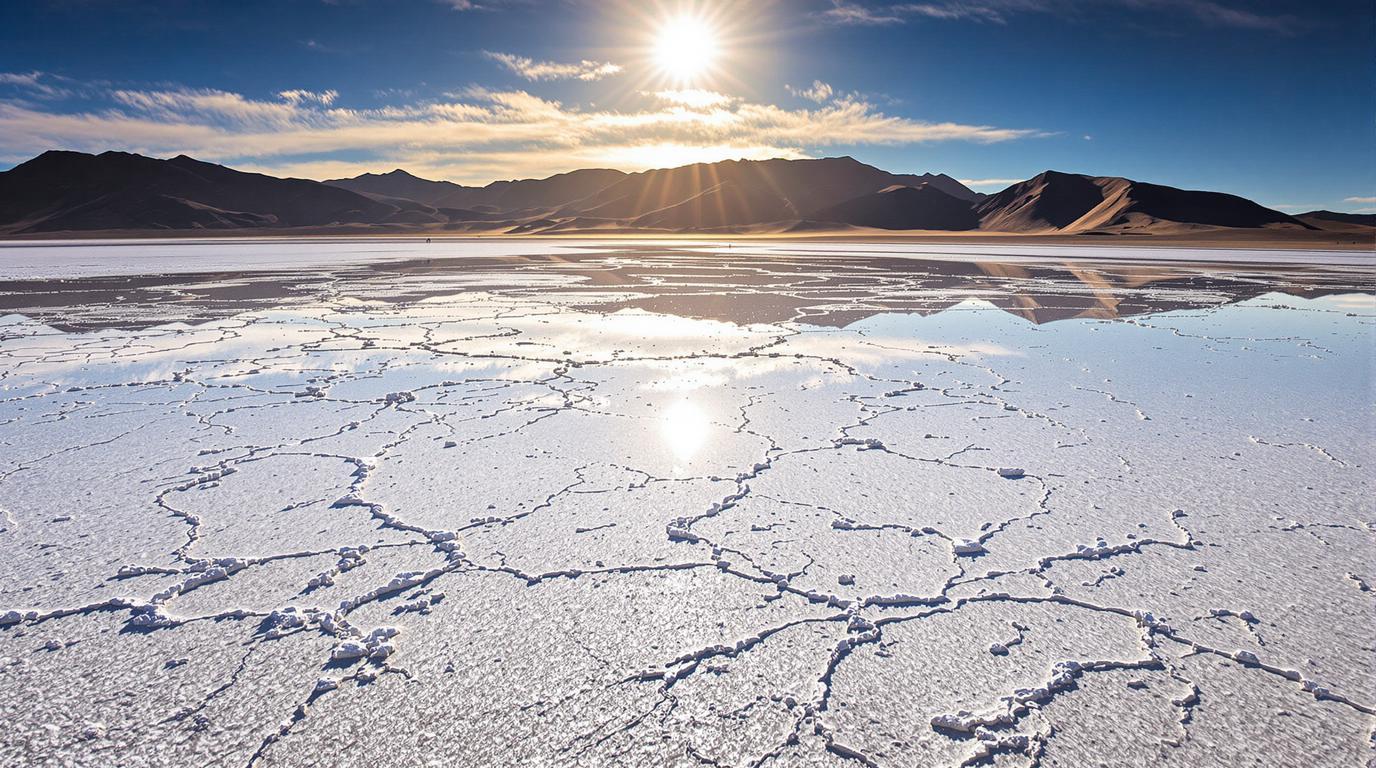I slid my toes into the crystalline crust at Lac Assal, feeling salt crackle like delicate ice beneath my feet. The early morning sun transformed the vast white plain into a shimmering mirror, momentarily blinding me as I gazed across Africa’s lowest point. Here, 155 meters below sea level in Djibouti’s volcanic heartland, the landscape doesn’t just invite exploration—it demands surrender to its otherworldly beauty.
Where salt caravans trace ancient paths through geological wonder
Millennia of evaporation have created this hypersaline marvel in the Afar Depression, where tectonic plates actively pull apart beneath your feet. The lake’s waters contain nearly 35% salt—making it even saltier than the Dead Sea and rendering swimming an eerily buoyant experience.
As dawn broke, I watched Afar tribesmen methodically harvest salt slabs using techniques unchanged for centuries. “Our ancestors taught us to read this lake,” explained Mahmoud, a third-generation salt harvester. “The best crystals form where hot springs meet the shallows—you must know where to look.”
The surrounding volcanic landscape tells Earth’s most primal story—black basalt fields flow toward the shore like frozen waves, while distant dormant volcanoes stand sentinel over one of Earth’s most dramatic geological formations.
Three hidden experiences beyond the salt flats
The secret emerald pools of Ardoukôba
Just seven kilometers from Lac Assal’s blinding white expanse lies a verdant secret. Tucked between volcanic fissures, naturally heated mineral pools create improbable oases where hardy vegetation thrives. I discovered these hidden pools by following narrow goat paths with my local guide, Ahmed.
Few tourists venture here, but those who do are rewarded with the surreal experience of soaking in warm, mineral-rich waters while gazing across a Martian landscape. Visit at sunset when the volcanic ridges turn copper-gold and cast long shadows across the desert floor.
The nocturnal salt-gathering ritual
While daytime tours showcase the lake’s visual splendor, the true cultural experience happens under starlight. Long after tourists depart, I joined a small Afar family preparing their camels for the overnight salt collection.
Working by headlamp and moonlight, they showed me how to cut precise salt blocks using handmade tools and load them onto woven mats. The night air carries conversations mixing ancient wisdom with contemporary concerns—a living tradition adapting to changing times in this remote geological wonder.
Tasting the desert’s unexpected abundance
In the small settlement of Randa, 40 minutes from the lake, I discovered Café Goubet—an unassuming stone building where Halima prepares the most extraordinary fish tagine imaginable. Caught that morning from the nearby Gulf of Tadjoura and slow-cooked with preserved lemons, local chilies, and a family-secret spice blend, this dish alone justifies the journey.
The café’s specialty bread, cooked by burying dough in hot volcanic sand, carries subtle mineral notes from the surrounding landscape. Pair it with Halima’s cardamom-infused coffee for a sensory experience that captures Djibouti’s cultural crossroads.
Essential insights for the intrepid explorer
Timing your encounter
Visit between November and February when temperatures hover around a manageable 30°C instead of the punishing 45°C of summer months. Arrive at the lake by 7am to witness salt harvesters beginning their day and experience the soft morning light that transforms the salt crystals into a photographer’s dream.
Finding comfort in extremity
Djibouti City’s Kempinski offers luxury air-conditioned sanctuaries, but for a more authentic experience, book at Hotel Plein Ciel—a modest but comfortable outpost with knowledgeable staff who arrange reliable transportation to the lake.
Alternatively, consider the ultimately rewarding option of camping near the lakeshore with local guides, falling asleep to the soft crackling of salt crystals forming in the cooling night air.
The profound gift of Earth’s extremes
As my fingertips traced the rough salt edges at Lac Assal, I felt a connection to something ancient and enduring. This is not merely a striking landscape but a reminder of our planet’s magnificent contradictions—a place where extreme hostility creates extraordinary beauty. In our increasingly accessible world, such raw encounters with Earth’s elemental forces have become precious indeed.
